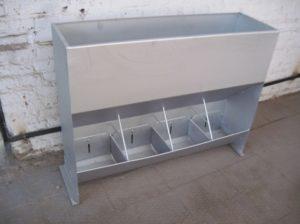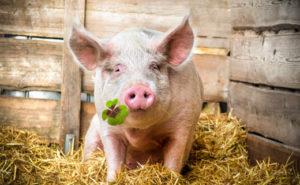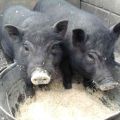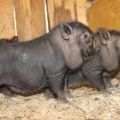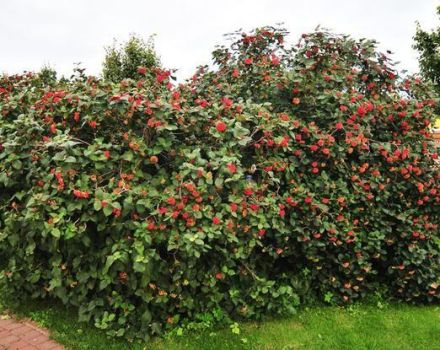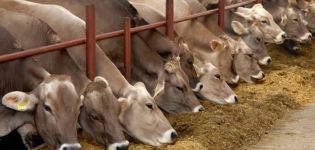Why piglets do not gain weight and grow poorly, the reasons and what to do
With proper care and normal development, young pigs reach a weight of 100 kg by the age of six months. However, things don't always go according to plan. There are deviations from the norm, provoked by various factors and reasons. In this case, the farmer begins to wonder why young pigs grow poorly and gain weight. The answer to it is not so easy to give, since there are quite a few reasons for the lagging of pigs in development.
Reasons for poor growth of piglets and methods for solving problems
Growth and rapid weight gain in young piglets depends primarily on appetite and diet. Poor appetite of an animal is a consequence of the influence of many negative factors, which include not only diseases and metabolic disorders, but also a banal vitamin deficiency, unhealthy diet or inadequate care conditions.
Lack of vitamins
In the case when the growing organism of a piglet does not receive the necessary amount of trace elements and the necessary vitamins, the animal begins to lag behind in development, weight gains poorly. A special place in this is given to vitamin D, which is vital for the piglet in the first stages. Its deficiency is observed mainly in those animals that are rarely allowed to walk or are generally deprived of such an opportunity.
If you do nothing and let the problem take its course, then a disease such as rickets can develop. It leads to deformation of the bone tissue.
Vitamin D deficiency can be compensated by introducing fish oil into piglet feed. You also need to regularly take walks in the fresh air in the sun so that the animals receive ultraviolet light. In the cold season, an ultraviolet lamp is fixed in the pigsty.
Veterinarians solve the problem of vitamin deficiency by prescribing injections that promote the establishment of phosphorus-calcium metabolism. Vitamin A deficiency also negatively affects the state of the body. The skin of the pigs becomes dry, digestion is disturbed, and there are disruptions in the respiratory process. In this case, pumpkin, carrots and sprouted grains must be added to animal feed.
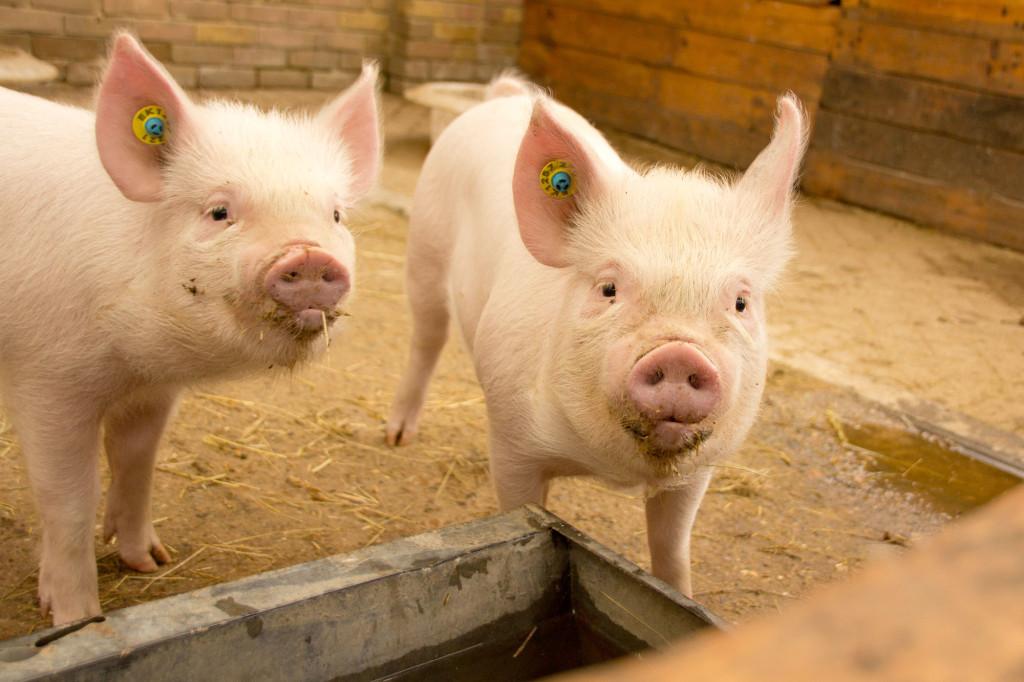
The lack of vitamin B is manifested not only in the inhibition of growth, but also in the disruption of the work of the heart and blood vessels. To get rid of the problem, you need to saturate the diet of piglets with legumes, bran, add yeast. They also need to feed fish and flaxseed meal.
Helminths
Pigs often suffer from various types of helminths. In the body of an animal, such types of worms can be parasitized as:
- nematodes;
- roundworm;
- protozoa.
The result of their activity is exhaustion, intoxication, and impaired appetite. Helminths take away a significant part of the nutrients from the young organism, so the piglet cannot grow and develop normally. Parasites can be identified after the animal's excrement is handed over to the laboratory for analysis. In case of detection of worm eggs, the veterinarian prescribes a course of treatment with antiparasitic agents.

Experienced farmers recommend carrying out preventive deworming once every 6 months. Once the parasites are eradicated, the pigs will regain their appetite and begin to gain weight.
Anemia
If a young pig at a certain age was not vaccinated with iron preparations, then his risk of anemia increases significantly. Wild pigs make up for the deficiency of this element from the soil, but domestic animals are deprived of this opportunity. From the sow, they receive only one sixth of the required amount of the substance.
Iron deficiency results in a decrease in hemoglobin. The blood is poorly saturated with oxygen, due to which all processes in the body slow down. This is fraught with poor appetite and weight loss. Severe cases lead to death of piglets. To avoid trouble, starting from the fifth day of life, young animals are injected with preparations containing iron.
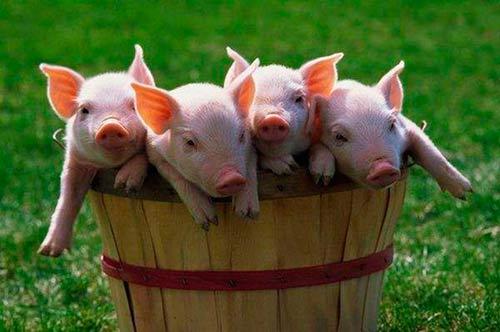
Pellagra
This disease is associated with a deficiency of vitamins in the pig's body. In particular, these are B vitamins, proteins and acids (these include tryptophan and nicotinamide). A catastrophic shortage of these components provokes metabolic disorders in the body. You can recognize the problem by the following symptoms:
- the appearance of a rash, swelling and peeling on the skin;
- the skin becomes covered with scabs, and over time, cracks appear on it;
- when the rash spreads to the oral cavity, there is abundant salivation;
- loss of appetite;
- change of constipation with diarrhea with mucus secretion.
Pellagra belongs to dangerous diseases that often lead to the death of piglets. Treatment is reduced to compensating for the deficiency of essential substances. The necessary medications can be prescribed by the veterinarian in the form of injections, since urgent measures are required. Together with drug therapy, it is recommended to revise the diet of pigs.
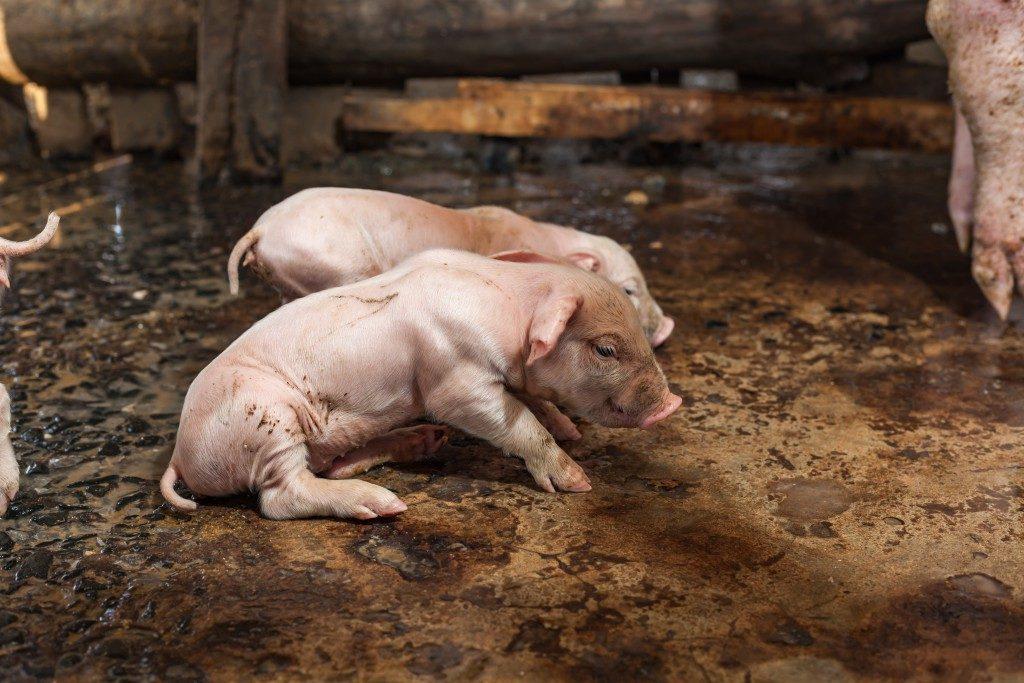
Improper nutrition
Poor nutrition is often the reason piglets gain weight slowly. Also, a properly composed diet is the fundamental principle for the prevention of vitamin deficiencies. The feed should contain a set of all nutrients and microelements necessary for the body. It is necessary to pay attention not only to the quality of food, but also to its taste characteristics. Piglets may refuse to eat only because the feed is not to their liking. Flavors such as the following help stimulate appetite:
- sugar;
- salt;
- mustard;
- essential oils;
- lactic acid.
In order for the animals to eat the proposed food with pleasure, it should be crushed, and the cereals should be boiled. For the prevention of intestinal disorders, food is given slightly warm, since the intestines of the piglets are tender. The quality of feed also plays an important role. In no case should you feed sour porridge or moldy grain to the pigs. Such a diet leads not only to intestinal disorders, but also to poisoning, more serious diseases.
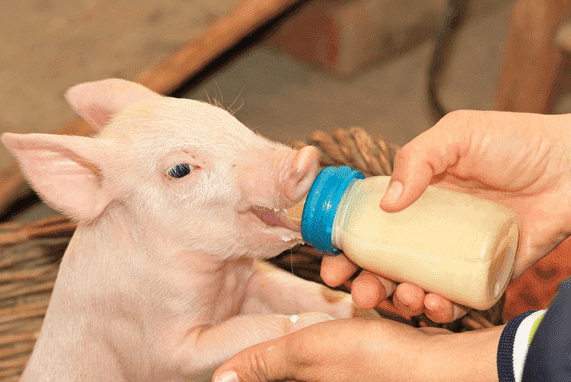
Poor housing conditions and care
The weight gain and growth of piglets depend not only on the diet, but also on the conditions of detention. If the pigsty is cool and damp, then you should not expect rapid development and good growth from animals. The minimum temperature indicators should not fall below +18 FROM.
If this happens, then most of the energy of the animals will be spent on heating their bodies, and not on growth.
The normal moisture content in a pigsty is 50-70%.If it is exceeded, then the pigs begin to get sick, and there is no more talk about a good set of mass. In this case, proper attention must be paid to ventilation. Hazardous gases such as ammonia and hydrogen sulfide can accumulate in a poorly ventilated area. They provoke the development of diseases in piglets, a deterioration in appetite. Due to inadequate living conditions, young animals are constantly under stress. Also, negative factors provoking a deterioration in appetite include:
- cramped room;
- insufficient lighting level;
- regrouping of piglets;
- transportation.

Pathologies and methods of their treatment
Often the causes of poor weight gain in piglets are congenital pathologies. In particular, they may have an incorrect bite, or the offspring were born as a result of related mating. Due to malocclusion, pigs are not able to chew food normally. They prefer liquid food, as a result of which full growth becomes impossible. The position of the teeth should be checked immediately after giving birth or when purchasing young animals. The upper and lower teeth should be in line.
The offspring reproduced in the process of relative mating have various health problems and are not able to develop normally. Young animals should be purchased only in the nursery or from reliable sellers.
Features in Vietnamese piglets
Vietnamese piglets have less stomach volume than traditional white breeds. In addition, they have a different structure of the gastrointestinal tract. For rapid weight gain, they should not be fed coarse pig food. The key to fast weight gain by Vietnamese pigs is:
- properly selected diet and diet;
- proper care and conditions of detention;
- walking in the fresh air.
Experienced experts advise to castrate young animals so that they gain weight faster. As a result, hormonal changes begin in the body, and the piglet becomes calmer.
